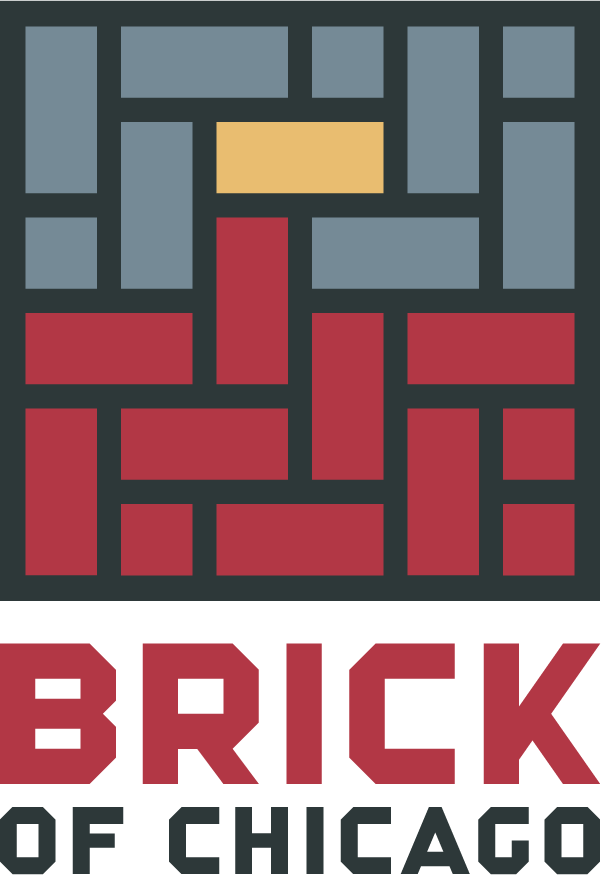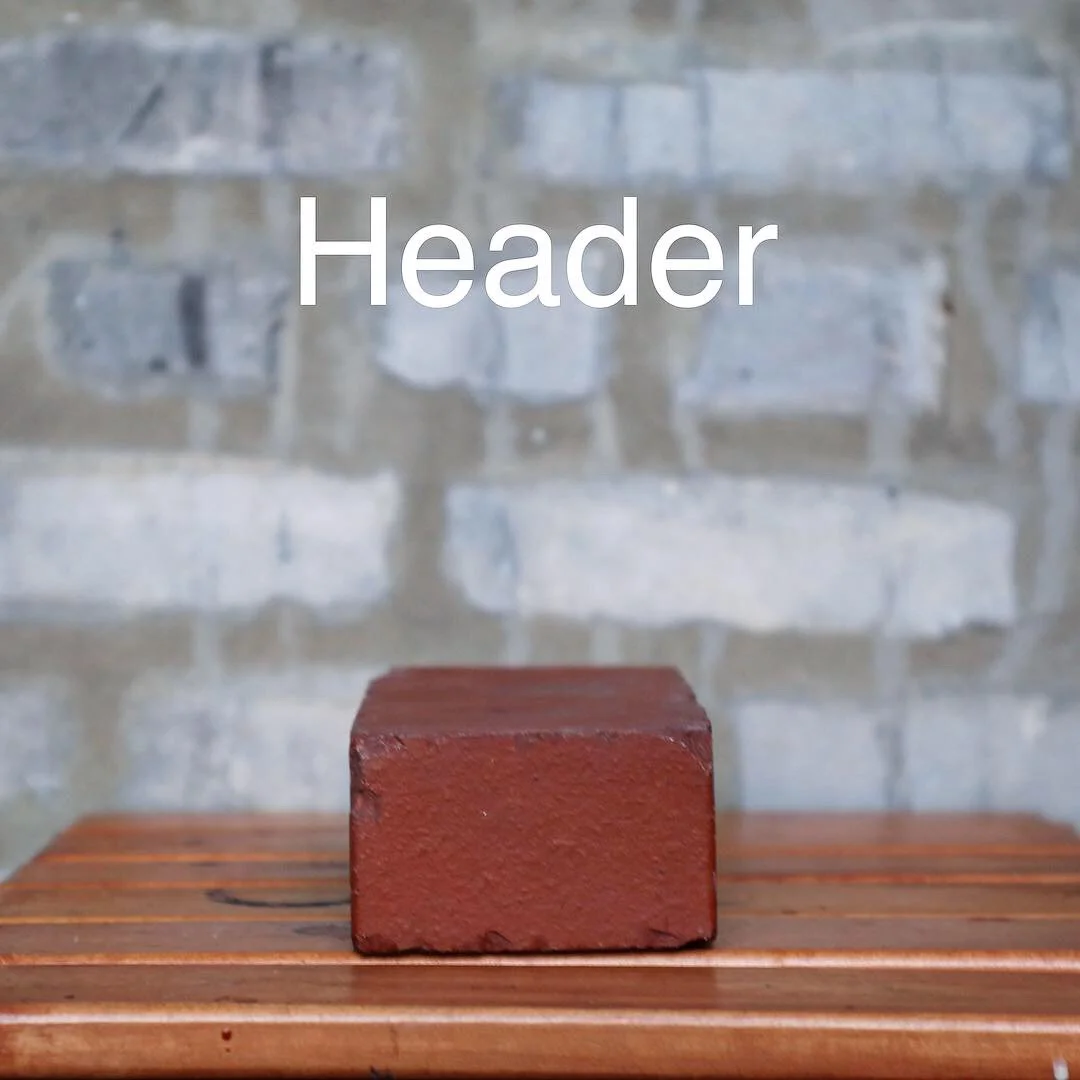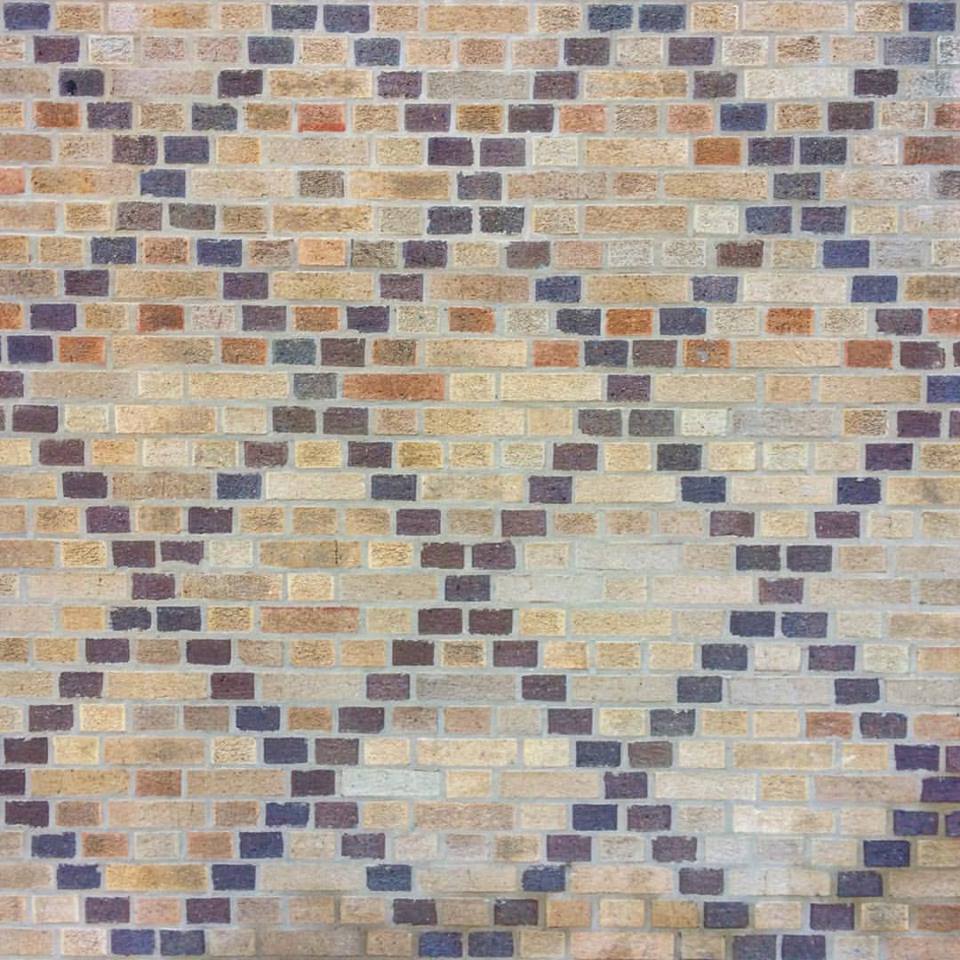An Introduction to Brickwork
In brickwork and bricklaying terminology, two things are important: the orientation of each individual brick, and how the bricks are laid (the bond). Each orientation and each bond has a different name.
Stretcher
The long side of the brick (hamburger style).
Header
The short side of the brick (hotdog style).
Rowlock
The short header side turned tall.
Shiner
The broad flat face of the brick laid sideways
Soldier
The stretcher side turned tall.
Sailor
The broad flat face of the brick laid standing upright.
Bonds
In order to have a more structurally sound brick wall, you need two things:
First, bricks need to be vertically offset from each other. Second, to give thickness to a brick wall, you need to lay bricks that stretch back into the wall.
The way bricks are laid to achieve these two goals is called the bond. Each style of bond has a different name:
Flemish Bond
Flemish bond alternates stretchers (the long side of the brick) with headers (the short side)
N Lincoln Ave
English Cross Bond
Like English Bond, but the rows of stretchers are offset from each other (rather than stacked). This creates a striking cross pattern in the brick and diamond pattern in the mortar.
W Chicago Ave.
Stretcher Bond
Stretcher bond is made up of only stretchers.
Grand Ave. St. Paul, Minnesota.
Header Bond
Header bond features courses of only headers. The header face of the brick faces forward while the rest of the brick extends back.
W Granville Ave
Monk Bond
Similar to Flemish bond, monk bond alternates two stretchers for every one header in every row (header-stretcher-stretcher-header).
St. Gregory The Great Catholic Church. W Gregory Ave.
English Bond
English Bond alternates one row of only stretchers for every one row of only headers.
Old Town School of Folk Music. N Lincoln Ave.
Scottish Bond
Scottish bond alternates five rows of only stretchers for every one row of only headers.
N Ravenswood Ave.
American Bond
American bond alternates three to six or more rows of only stretchers for every one row of headers. This bond is also called Common Bond.
W Thorndale and N Central Park Ave.
Raking Stretcher Bond
A wall of only stretchers where each row is slightly offset to one side or the other (rather than over center like regular stretcher bond).
N Sawyer Ave.
Sussex Bond
Sussex bond alternates three stretchers for every one header in each row (header-stretcher-stretcher-stretcher-header). It can often be found in long stretches of wall.
Graceland Cemetery. W Irving Park Rd.
Rat-trap Bond
Rat-Trap bond follows the same pattern as Flemish bond, but alternates rowlocks (the short header end of the brick turned tall) and shiners (the broad flat face of the brick).
In a rat-trap bond wall, both sides of the wall look the same. Sandwiched between each side's shiner is a cavity. The name of the bond is in reference to this cavity.
N Ridge Blvd.
Other Fun Brick and Building Stuff
Size
A brick needs to be wide enough (but not too wide) to hold comfortably in one hand. The other hand holds the trowel (for laying mortar).
Then, from the width you get the length. The length of the brick is juuuust a little longer than two widths. Why? Because that way two widths plus a bit of mortar (called the Perpend) equals one length. Two headers plus a perpend equals a stretcher!
Let's do the math. A standard US brick is 194 × 92 × 57 mm. Two 92mm headers = 184mm + 10mm of mortar (the perpend) = one 194mm stretcher.
Diapering
When bricks are laid in a diamond pattern it is called diapering. That's pretty fun, yeah?
When the diamond pattern is created by headers, like in this wall, it is a variation on Flemish bond, called Flemish diamond bond.
W Elmdale Ave.
Buttress
If a column supports a building vertically, a buttress supports it horizontally.
Buttresses project out of the wall in concentrated strips of lateral support. This allows for windows and thinner overall walls on large masonry buildings.
Theodore Roosevelt High School. W Wilson Ave.
Rustication
Rustication is a stone masonry technique wherein the front face of each block of stone is made deliberately rough. This is done to give visual emphasis to each individual stone block. Only the front face is rough, the other five sides of the block are smooth.
W Winnemac Ave.
Brick and the Prairie School of Architecture
The Prairie Style of architecture emphasized horizontal lines.
In this Prairies Style example from Schurz High School, brickmasons created a horizontal emphasis by making the perpends (mortar between the bricks) dark and flush with the brick, while the beds (mortar on top and bottom) are lighter and recessed slightly.
These mortar tricks make each row of bricks look like one long continuous horizontal line.



















